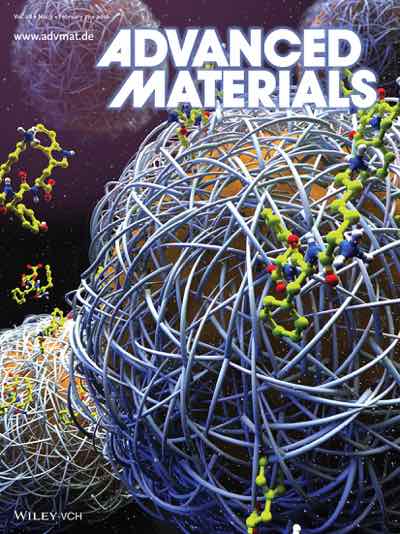Gary’s work on the discovery of a new class of tripeptide emulsifiers is featured on the front cover of Advanced Materials and has received write-ups in several online science sites. The work has been done in collaboration with the Ulijn group and Macphie of Glenbervie (a food ingredients company).
Text Below from ScienceDaily:
Emulsions, the stabilized mixtures of oil and water are the basis of many food and personal care products such as spreads, creams, and pastes. Each product has different requirements and there is a need for emulsifiers that can be tuned, or tailored but are also biocompatible and biodegradable.
Now, Dr. Rein V. Ulijn is among the scientists from the City University of New York’s Advanced Science Research Center (ASRC) and the University of Strathclyde who discovered a new way to create emulsions with tunable properties, based on very simple biological molecules, as published as the cover article in the journal Advanced Materials.
Ulijn–Director of the ASRC’s Nanoscience Initiative–and Strathclyde’s Dr. Tell Tuttle used a combination of experiments and simulations to show that dramatically variable oil-in-water emulsions may be produced from tripeptides.
The research group showed the potential to form emulsions with tunable stability by mixing oil, water and designed peptides composed of specific sequences of just three amino acids–the building blocks of proteins which are the structural and functional units of all living systems.
“We are using the same biological building materials that nature uses–but in much simpler ways–to form these short peptides,” Ulijn said. “These emulsions are biodegradable to amino acids, which are safe for use in food and drugs. Their sequence-dependent tunability enables us to match specific applications and will allow academic and commercial groups to make stable food products.”
“This project provides an excellent example of how fundamental science can be rapidly translated to real-world applications when the right team is in place” said Dr. Gillian M. Small, Vice Chancellor for Research and Executive Director of the CUNY ASRC. “The Advanced Science Research Center brings together top researchers, provides them with a creative environment and the most advanced equipment to spark innovative approaches to complex scientific challenges.”
Because there are nearly 8,000 possible sequences of amino acids in tripeptides, the team used both experimental and computational methods to narrow down the particular combination of amino acids that would form the appropriate structures.
“The computational methods applied in this case allow us to rapidly distinguish between the differing ability of the 8,000 different tripeptides to form emulsions,” Tuttle said. “In particular, these methods can be used to identify peptides that are able to form emulsions with differing stabilities and within different environmental conditions before any experiments are carried out — leading to savings in both time and cost.”
With this research, the team is investigating possible applications in food, cosmetics and personal care products. Paul McKnight, Senior Research and Development manager at Macphie–a Scotland-based food ingredient manufacturer–said the research will have a significant impact on its manufacturing techniques.
“This is a very exciting project to be involved in as it has a tremendous bearing on what we do as a company due to the wide use of emulsifiers, stabilisers and gellators across our product range, which includes sweet and savoury sauces, dressings and batters required to make cakes and muffins,” McKnight said. “The insight and direction we were able to give to the project through a food industry perspective from material functionality requirements to the end use application of them, has helped focus the direction of the project and assist in the definitions required to tune the peptides to the necessary performance attributes.”










Comments are closed.